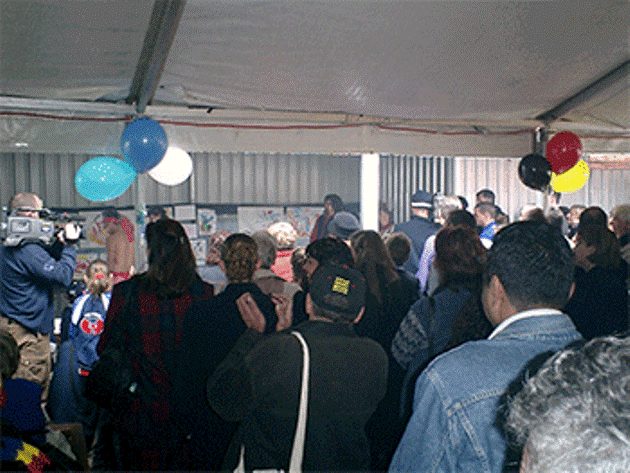An Aboriginal Medical Service (AMS) is a primary health care service initiated and operated by the local Aboriginal community to deliver holistic, comprehensive, and culturally appropriate health care to the community which controls it (through a locally elected Board of Management).
In keeping with the philosophy of self-determination, Aboriginal communities operate over 130 AMSs across Australia. They range from large multi-functional services employing several medical practitioners and providing a wide range of services, to small services without medical practitioners, which rely on Aboriginal health workers and/or nurses to provide the bulk of primary care services, often with a preventive, health education focus.
The services form a network, but each is autonomous and independent both of one another and of government. The integrated primary health care model adopted by AMSs is in keeping with the philosophy of Aboriginal community control and the holistic view of health that this entails.
'Aboriginal health is not just the physical well being of an individual but is the social, emotional and cultural well being of the whole community in which each individual is able to achieve their full potential thereby bringing about the total well being of their community. It is a whole-of-life view and includes the cyclical concept of life-death-life.’ (NAHS, 1989).
Source of the above definitions is www.naccho.org.au/Home.html.
Aboriginal Medical Services also conduct specialist clinics with visiting medical specialists in a wide range of disciplines, including:
Podiatry
Maternal & Child Health
Optometry & Ophthamology
Oral Health |
Chronic Disease
Sexual Health
Psychology |

Wally Cooper and sons performing traditional dances before the large supportive crowd at the opening of the Albury Wodonga Aboriginal Health Service
Because Australia has a shortage of General Practitioners – as well as a mal-distribution of GPs, concentrated in major cities – it is common for Aboriginal Medical Services to employ Overseas Trained Doctors (OTDs).
The Australian Government has constructed an elaborate system for recruiting Overseas Trained Doctors. This system includes granting recognition to a network of “workforce agencies” which specialise in this recruitment field. Often, an AMS wanting to recruit a GP, including an Overseas Trained Doctor, will negotiate with one of these workforce agencies.
Aboriginal Medical Services do not have an international profile to enable potential Overseas Trained Doctors to learn about AMSs and then decide to apply for vacant GP positions directly and be recruited through the recognised workforce agencies.
As a result of this indirect marketing profile, AMSs can miss out on many opportunities to recruit GPs who are Overseas Trained Doctors.
By adding to their marketing strategies, AMSs can promote themselves as employment destinations with potential OTDs in countries which have high standards of GP training and where there is a tradition of working in developmental environments. This includes countries such as Canada, Germany and The Netherlands.
This presentation has been prepared as one way to rectify this gap in the GP marketing strategies for AMSs, and to raise the profile of AMSs in targeted countries with high medical training standards, so as to establish direct communication access between interested OTDs and AMSs. |





